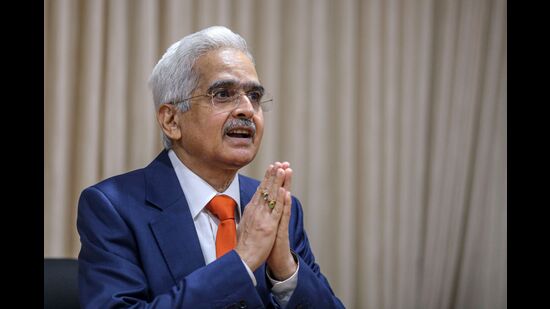Growth is still the real issue
With a global recession now looking almost certain, the current cycle of partly proactive monetary tightening is perhaps prudent
The 0.5 percentage point increase by the Reserve Bank of India (RBI)’s monetary policy committee (MPC), taking the policy rate to 5.9%, making both existing and new loans expensive, needs to be seen in the right context to be fully appreciated. It comes in the wake of a 0.75 percentage point rate hike by the United States Federal Reserve last week, accompanied by an extremely hawkish commentary that left no doubt that more hikes are in the offing. And it comes days after a disastrous tax cut by the United Kingdom’s new premier, roiling the country’s financial markets, with most analysts expecting the Bank of England to effect an out-of-turn rate increase (and a substantial one at that).

RBI’s rate action, in contrast, was expected, and its commentary, measured and moderate — a sentiment that the markets returned with their buoyant response to the policy. Given that inflation continues to remain sticky (although there are signs, as this newspaper has acknowledged, that the situation is improving), the MPC will likely effect another rate increase in December, and then change its policy stance to neutral. To that extent, the rate increases by RBI since April (when the policy rate was 4%) can be said to be front-loaded — a smart approach in terms of signalling, and a pragmatic one given that everything that happens in 2023 will be seen from the perspective of the coming national election in 2024. The policy was also measured in its response to the rupee’s depreciation against the dollar — pointing out that this has happened in a much more orderly fashion (than in other countries), and that the Indian currency has actually not fared as badly as some others (it hasn’t) — and the dip in foreign reserves, highlighting that two-thirds of the decline was on account of revaluation of reserves, given the dollar’s movement, calming fears that the central bank was burning through them in an effort to fix a value for the rupee (which RBI assured it wasn’t doing).
It is clear from Friday’s monetary policy statement, as also from the monetary policy report that RBI puts out twice a year (one came out along with Friday’s policy), that the real issue remains growth and risks to growth — and on that front, the central bank’s projections may be a bit on the rosier side. RBI has revised downward its Gross Domestic Product estimate for the ongoing year to 7% from 7.2%, but this is purely on account of the first quarter (in which actual growth was below RBI’s estimates); it has actually taken up its growth estimates for the second, third and fourth quarters from its August estimates. With most analysts expecting sub-7% growth this year (6.7% would appear to be the consensus), these projections are unlikely to be realised, although 6.7%, in the current global context, is still an impressive number for the world’s fifth largest economy.
RBI’s monetary policy report estimates that growth in 2023-24 could be 6.5%, which isn’t surprising given that a global recession now looks almost certain, especially given the Federal Reserve’s actions. Seen from that perspective — the economy will need a monetary policy that is either neutral or accommodative at that stage — the current cycle of partly-proactive tightening is perhaps prudent.
All Access.
One Subscription.
Get 360° coverage—from daily headlines
to 100 year archives.



HT App & Website







